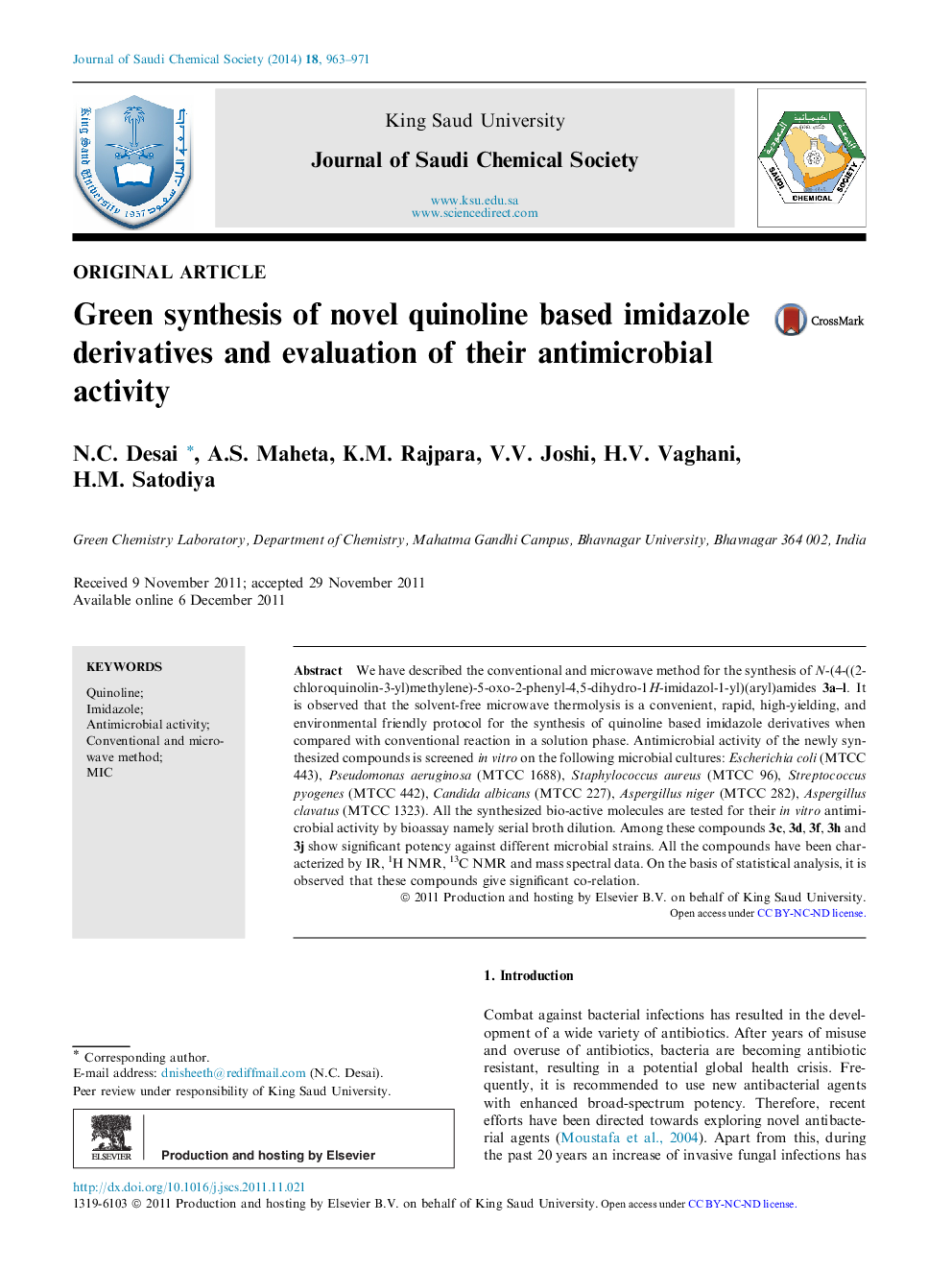| Article ID | Journal | Published Year | Pages | File Type |
|---|---|---|---|---|
| 229622 | Journal of Saudi Chemical Society | 2014 | 9 Pages |
We have described the conventional and microwave method for the synthesis of N-(4-((2-chloroquinolin-3-yl)methylene)-5-oxo-2-phenyl-4,5-dihydro-1H-imidazol-1-yl)(aryl)amides 3a–l. It is observed that the solvent-free microwave thermolysis is a convenient, rapid, high-yielding, and environmental friendly protocol for the synthesis of quinoline based imidazole derivatives when compared with conventional reaction in a solution phase. Antimicrobial activity of the newly synthesized compounds is screened in vitro on the following microbial cultures: Escherichia coli (MTCC 443), Pseudomonas aeruginosa (MTCC 1688), Staphylococcus aureus (MTCC 96), Streptococcus pyogenes (MTCC 442), Candida albicans (MTCC 227), Aspergillus niger (MTCC 282), Aspergillus clavatus (MTCC 1323). All the synthesized bio-active molecules are tested for their in vitro antimicrobial activity by bioassay namely serial broth dilution. Among these compounds 3c, 3d, 3f, 3h and 3j show significant potency against different microbial strains. All the compounds have been characterized by IR, 1H NMR, 13C NMR and mass spectral data. On the basis of statistical analysis, it is observed that these compounds give significant co-relation.
